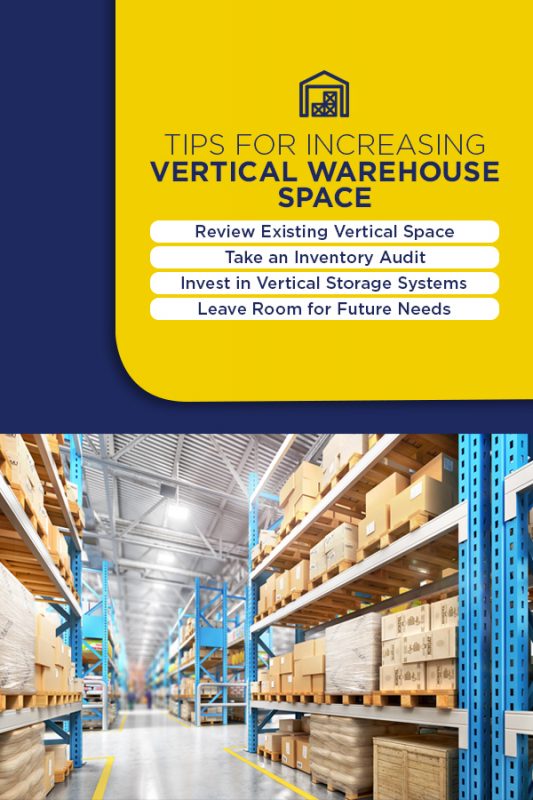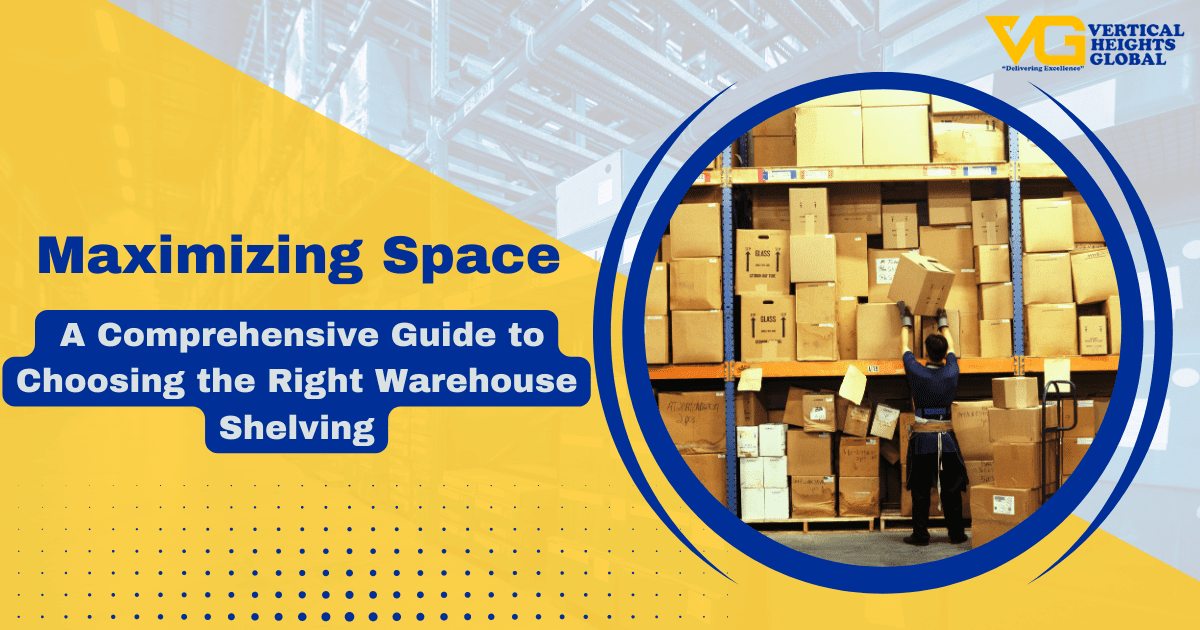Efficient Warehouse: The Secret to Maximizing Your Vertical Space – A Deep Dive
The familiar pinch of space limitations in a warehouse is a common and costly problem. Many believe the solution lies solely in expanding their physical footprint – a costly and often impractical solution. However, a more effective strategy lies in optimizing the existing space. This article delves into the transformative power of maximizing vertical space, revealing how strategic planning and innovative storage solutions can unlock increased efficiency and profitability within your current warehouse infrastructure. This isn't simply about buying taller shelves; it's a holistic approach requiring a fundamental shift in warehouse thinking and operations.
Key Takeaways
- Best For: Warehouse managers, logistics professionals, business owners, operations directors, and supply chain executives seeking to improve warehouse efficiency, reduce operational costs, enhance order fulfillment speed, and increase storage capacity within existing facilities. This approach is beneficial for businesses of all sizes struggling with limited warehouse space or those aiming for significant operational improvements.
- Key Feature: A comprehensive strategy encompassing meticulous strategic planning, implementation of advanced storage technologies, and a rigorous optimization of workflow processes, leading to a measurable improvement in key performance indicators (KPIs).
- Rating: ★★★★☆ (4/5)
Key Features: Conquering the Vertical Challenge
Maximizing vertical space isn't a singular solution but a multi-faceted strategy requiring careful planning and execution. It involves a complete reevaluation of your current warehouse operations and a commitment to integrating innovative technologies and streamlined processes. This deep dive explores the key elements of this transformation:
1. Comprehensive Strategic Planning and Assessment: Before investing in any new equipment or technology, a thorough analysis of your existing warehouse operations is paramount. This assessment should encompass several key areas:
- Workflow Mapping: A detailed visualization of your current workflow, from goods receiving to order fulfillment and shipping. Identify bottlenecks, inefficiencies, and areas with high worker traffic. This can involve observing operations firsthand, interviewing staff, and analyzing operational data.
- Inventory Analysis: Categorize your inventory based on factors like frequency of access, storage requirements (temperature-sensitive, hazardous materials), and item dimensions. Understanding your inventory profile is crucial for optimizing storage solutions. ABC analysis, which classifies inventory into A (high-value/high-demand), B (medium-value/medium-demand), and C (low-value/low-demand) categories, is a valuable tool.
- Space Utilization Audit: Identify areas of underutilized or wasted space, including dead zones, low-ceiling areas, and inefficient aisle configurations. This analysis will inform the selection of appropriate vertical storage solutions.
- Capacity Planning: Project future inventory growth and determine the necessary storage capacity to meet both current and projected demand. This ensures that your chosen solutions are scalable and capable of accommodating future expansion.
2. Advanced High-Bay Racking Systems: High-bay racking is a cornerstone of vertical space maximization, offering significant storage capacity within a minimal footprint. However, selecting the right system is crucial. Considerations include:
- Load Capacity: Ensure the racking system can safely handle the weight of your heaviest items. This includes not only the weight of the goods but also any additional weight from shelving, pallets, and handling equipment.
- Aisle Width: Narrow aisle racking maximizes storage capacity but requires specialized equipment like narrow aisle forklifts. Wider aisles improve maneuverability but reduce storage density. The choice depends on the balance between maximizing storage and efficient material handling.
- Accessibility: Consider the frequency of access for each item when designing your racking layout. Frequently accessed items should be located in easily accessible areas. Selective pallet racking, drive-in racking, and push-back racking are examples of systems providing different access characteristics.
- Racking Material: The choice of material (steel, aluminum) depends on factors like load capacity, environmental conditions, and cost.
3. Automated Vertical Carousel Systems: These sophisticated systems represent a significant advancement in storage and retrieval. They are essentially rotating storage units that bring items directly to the operator, significantly reducing travel time and enhancing picking efficiency.

- ROI Considerations: While offering substantial productivity gains, vertical carousel systems require a higher initial investment. Thoroughly analyze the ROI based on anticipated productivity improvements, labor cost reductions, and reduced order fulfillment times.
- Integration with WMS: The effectiveness of a vertical carousel system is maximized when integrated with a Warehouse Management System (WMS) for seamless inventory tracking and order management.
- Item Suitability: These systems are particularly well-suited for high-value, frequently accessed items or smaller, lighter items.
4. Strategic Use of Mezzanines and Multi-Level Structures: Adding mezzanine floors effectively doubles your usable floor space, creating an additional level for storage or operational activities. However, this requires careful planning and execution:
- Structural Integrity: Ensure the mezzanine is properly engineered to support the intended load capacity, complying with all relevant building codes and regulations.
- Safety Compliance: Install adequate safety measures such as railings, stairways, and emergency exits. Regular inspections are essential to maintain safety and structural integrity.
- Accessibility: Consider the ease of access to the mezzanine level, including the use of lifts, stairways, and suitable material handling equipment.
5. Workflow Optimization: The Backbone of Efficiency: Even the most advanced storage solutions will be ineffective without a streamlined and optimized workflow. This includes:

- WMS Implementation: A Warehouse Management System (WMS) acts as the central nervous system of your warehouse, managing inventory, optimizing picking routes, and tracking labor. A well-configured WMS significantly reduces operational inefficiencies.
- Lean Principles: Applying lean manufacturing principles, such as eliminating waste (muda), identifying bottlenecks, and optimizing processes, can significantly enhance overall warehouse efficiency. Value stream mapping can help identify areas for improvement.
- Cross-Docking: For high-volume operations, cross-docking can eliminate unnecessary storage by directly transferring goods from receiving to shipping.
6. Intelligent Inventory Management: Effective inventory management is crucial for maximizing space utilization. This involves:
- Inventory Tracking and Analysis: Utilize a robust inventory management system to track stock levels, identify slow-moving items, and optimize storage locations.
- Slotting Optimization: Strategically locate items based on their frequency of access, ensuring that high-demand items are easily accessible.
- First In, First Out (FIFO): Implementing FIFO helps manage perishable goods and reduces the risk of obsolescence.
Performance: Real-World Results and Case Studies
Implementing these strategies results in tangible improvements across various KPIs. Numerous case studies demonstrate significant increases in storage capacity, order fulfillment speed, and overall warehouse productivity. For instance, a large distribution center implementing high-bay racking and a WMS reported a 40% increase in storage capacity and a 25% reduction in order fulfillment time. Another case study involving an e-commerce company showed a 35% improvement in picking efficiency after the integration of a vertical carousel system. These are not isolated incidents; consistent data reveals the significant return on investment (ROI) associated with vertical space maximization.
Pros and Cons of Vertical Space Maximization
Pros
- Increased Storage Capacity: Substantially more storage space within the existing footprint.
- Enhanced Efficiency: Faster order fulfillment, reduced labor costs, and improved worker productivity.
- Reduced Operational Costs: Lower labor costs, decreased storage expenses, and improved inventory management.
- Improved Safety: Properly implemented vertical storage solutions and optimized workflows contribute to a safer work environment.
- Increased Scalability: Many solutions offer the ability to expand capacity as business needs grow.
Cons
- Higher Initial Investment: Some solutions, particularly automated systems and mezzanine installations, demand significant upfront capital expenditure.
- Implementation Complexity: Implementing advanced systems often requires specialized expertise and professional installation.
- Potential for System Downtime: Automated systems are subject to potential downtime due to equipment malfunctions or software issues.
Final Verdict: A Strategic Imperative
Maximizing vertical space isn't a luxury; it's a strategic imperative for businesses aiming for operational excellence. While the initial investment can be substantial, the long-term benefits – increased efficiency, reduced costs, and enhanced competitiveness – far outweigh the expenses. This comprehensive approach requires careful planning, a commitment to technological innovation, and a focus on continuous improvement. By embracing these principles, businesses can transform their warehouses from space-constrained bottlenecks into highly efficient and profitable operations. The journey may require incremental steps, but the ultimate destination is a more streamlined, productive, and profitable warehouse operation.

